Introduction to Canine Companions in Mesopotamia
While the early use of collars can be favored back to ancient Mesopotamia, they were simple ropes utilized to direct the canine; developing to contemporary collars of cloth or leather connected with a leash or stick. The history of how dog collars first came about is attributed to the Ancient Mesopotamians however the history of how the dog was domesticated still remains a mystery. Dogs also had important function especially with relationship to the goddess Inanna or Ishtar who is illustrated having hunting dogs with collars and leashes in the ‘The Epic of Gilgamesh’ predated between 2150-1400 B.C.

The early collars started from being just strings but moved to those that were made from cloth or leather materials. Prehistoric man noticed that a dog’s lick can benefit a sick or injured person, thereby linking dogs with healing and the goddess Gula. Love, sex and war were also associated with Inanna/Ishtar and dogs were also included in them. In the progress of Mesopotamian civilization, dog collars later developed into what are known today as slip leads as early as 612 BCE. The dogs were owned by all kinds of people; however, gentlemen wore identification collars on with owner, and dog the name engraved.
Historical Context of Ancient Mesopotamia
The background of ancient Mesopotamia can be discussed from various perspectives since its development results from numerous factors of several millennia. Before the advent of modern excavations in the mid-19th century, knowledge of this region, known as the cradle of civilization, was primarily derived from three key sources: Bible, Greek and Roman historians including Herodotus, Thucydides, Homer and Plutarch; The historical records of Berosus, the Babylonian historian, who wrote in Greek.

This source was proved more useful in developing initial knowledge about the history, culture and achievements of Mesopotamia. It is prohibited that Mesopotamia was a theater of some of the major civilizations in the ancient history of planet earth – the Sumer, Akkad and Babylonian civilizations or a few other major discovered civilizations which have flourished in the region from about 5000BC to 539BC thus adding a sparkle to a few of the significant historical progressions including the birth of agriculture, the evolution of the first cities in the world and several other Sumer also marked the beginning of writing in the form of cuneiform script sometime in 3400/3100 BC Other Sumer’s important achievements: Sumer also developed the early form of laws with the code of Hammurabi. To fill these void religious practices were instrumental to the extent that several Mesopotamians believed in gods and goddess, and even engineered temples including; ziggurats. The political part of the Mesopotamian history was marked by the presence of great empires such as Assyria, Babylonia, and Persia which remained significant for the region. Although it lost its independence after years, and was incorporated into larger empires, ancient Mesopotamia is remembered as a key critical center of development, creativity, and people’s civilization on the Earth.
What was the role of dogs in ancient Mesopotamia?
People of Mesopotamia valued dogs as watchmen, physicians, and attendants of gods. Healers are usually associated with dogs and there was a statue of Gula along with the figure of a dog.

Some of the most worshipped gods and goddesses in Mesopotamia were Innana among them. She was depicted with a companion animal; more specifically, she was often illustrated with a dog. This emphasized on the fact that these animals had a very big part in their culture.
Dogs as Hunters in Mesopotamian Art
Ancient Mesopotamians valued dogs. They were regarded by people as significant. They were considered as animals that could be kept as pets as well as animal partners who helped in hunting. This is well illustrated in the examples of Mesopotamian art whereby the dogs depicted are in hunting scenes on palace walls and cylinder seals. The pictures show how he people and dogs need each other and can rely on each other.

These demonstrate how humans and dogs are fast and powerful in killing their prey. Dogs are indicated in hunting and this was important since hunting is a basic necessity in most people’s diet. These representations point to fact that Mesopotamians had a lot of regard and admiration for their dogs. As such, the choice of the subject matter and its focus on the dogs’ useful work, obedience, and friendship is significant. They obviously had a more courteous and cooperative interfacing due to the historical respect given to the ancestors of today’s DXN.
Dogs as Companions in Mesopotamian Society
It is noted that in Mesopotamia, old-world dogs were used for hunting. They were also devoted animals or pets. Households loved them. Other finds depict that dogs were present in the everyday activities of people in ancient times. They were protected and people of the family were fond of them. They were regarded as a special part of families as they acted as friends and guardians, and provided for emotional needs.

A common theme evident in Mesopotamian homes was the fact that dogs were portrayed as valued participants of the household. Those who saw them relegated them not only to the roles of functional animals. They used to perceive them as relatives who engaged in normal functions of their ordinary lives. Dogs in burials do this to confirm this affection. It shows that the two people had a strong affection for each other and this extended even after the death of one of them.
Thus, Mesopotamians loved dogs and they were provided with care and attention. This was because they served an affective purpose in human existence as pointed out by Werren. They were also looked at as shield bearers in the homes and temples. This brought out the aspects of religion and culture in which they are considered royalties.
Hence, it is important to conclude that the people of ancient Mesopotamia did appreciate dogs. It was analyzing them as active and loved ones in society. Pets, particularly dogs assumed the role of being family players. Society respected them. This tells a lot on the kind of esteem that the Mesopotamians had for their dogs as pets.
Dogs as Protectors in Mesopotamia
Dog has been a caretaker of homes, livestock, and shrines as per ancient Mesopotamian civilization. This was perhaps because their role was very central to everyday living particularly as ‘guardians’ of their people. They relied on them to keep off strangers and other wild creatures. They helped in protecting owners and their properties.
In the rural setting, dogs served the purpose of guarding livestock from such factors as wild animals and thieves. This described their ability to act as a security power and bring about security to the guarded populace. Dogs had practical roles. Another idea was to possess some sort of supernatural ability. They are always depicted surviving in areas such as temples and other holy grounds. It was believed that the evil spirits stayed away when people put statues or carvings of dogs.

According to most works of art and literature referring to Mesopotamia, dogs represented courage and watchfulness. As protectors, Mesopotamia used dogs for numerous things. Their physical, religious, and metaphoric functions rendered them useful. They were valued for their loyalty and protective issues. It also stressed the close relationship that man has with the canine species. It remains a bond whose hallmark has been shaped for many generations
Religious and Mythological Roles of Dogs in Mesopotamia
Ancient Mesopotamians valued dogs. In religion and myth, they played crucial parts. They were frequently associated with deities. Among them, Gula or Ninkarrak was the god of healing and the arts of medicine. There was an indication that she was usually portrayed with a dog. This association pointed to the view that dogs are protective and can heal.

Folklore and myths contained many depictions of dogs’ appearance. For example, they were Enki, the god of wisdom, Ea in Sumerian, in the Epic of Gilgamesh. It depicted them as being subordinates to gods and heroes. In these stories dogs were protectors of the underworld similarly like in the Aenid. He led and guarded souls in difficult afterlife and provided them instructions to find way. This role emphasized their significance in the Mesopotamian culture and religion. They were about dying and what came after it.
It is noteworthy that in that period sculptures or relieves of dogs as temple and religious buildings were used. The dogs represented their divinity. The depictions were artistic. He said that they depicted basic habits of a home and the great respect that Mesopotamians had for dogs. They pointed in their analyses that the dogs served a functional practical and spiritual role in the parts of the society that existed at that period.
The Evolution of Dog Collars
The Mesopotamians were one of the earliest civilizations with the Sumerians at the forefront. Many people attribute the invention of the dog collar to them. But this is still a topic of discussion. The origin of dogs’ domestication is also not precise and can only be estimated to have occurred about a thousand years ago. Dog collars in Mesopotamia were just strings that were elaborated. People put the collars on the dogs as a neck accessory. They assisted the owners in other ways, regarding their animals.
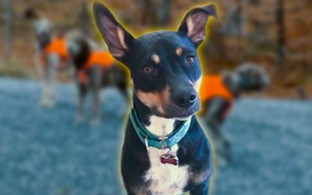
People most likely substituted them with other better materials such as cloth or leather and continued to call them collars. These collars were then attached to chains or long poles for better handling of the pet for example over the neck. This was so as Mesopotamian society developed progressed and became more complex. The choice of materials for the construction of dog collars also changed as well as their purpose.
Early Dog Collars
Dog collars of the past were purely functional. They will help you to control and subdue a dog. The first dog collar that was on record in ancient Mesopotamia, however, was nothing more than a plain cord. No! The owner tossed it over the dog neck and used a better way, to control this animal. Presumably, over time people started using these cords instead of collars. They created collars for dogs out of sterner fabrics such as cloth or leather. The design and complexity of dog collars developed along with Mesopotamian civilization. The workers put these collars on leads or long sticks to better handle the dogs.
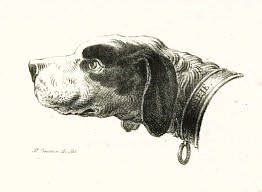
The creators had made sure to use hard, robust materials in crafting the initial collars. They made sure the collars were durable and able to hold through all of work a dog does during its life. The utilization of leather-based became normal for those early collars. It was used by people as it is tough and long lasting. Metal collars were also used. They sometimes featured spikes. Their dogs were hunters who defended animals from day predators and would also guard their families’ livestock. Craftsmanship varied. Simple functional designs to more detailed ones. These styles represented and meant the clout that whoever owned them could afford. It was these early collars that formed the bedding for modern dog collar design. They did so through the ages. It was limited as a simple constraint at the start. However, they devolved into superior shapes. From identification to protection, and then augmented with decoration – later symbolism was added.
Materials and Craftsmanship
The materials used were the common ones of Mesopotamian society: clay, but also metal and stone. They used these materials to produce both reliefs and sculptures. The Uruk period also gave birth to the earliest complex narratives and more realistic human figures. The Mesopotamians used the hieratic scale extensively, a system that was part of their worldview, with gods depicted larger than humans and kings taller than population at large. It emphasized the significance of Gods and kings. Building In Mesopotamian cultures used a mix of material but mud brick was the simplest and most available to be had.
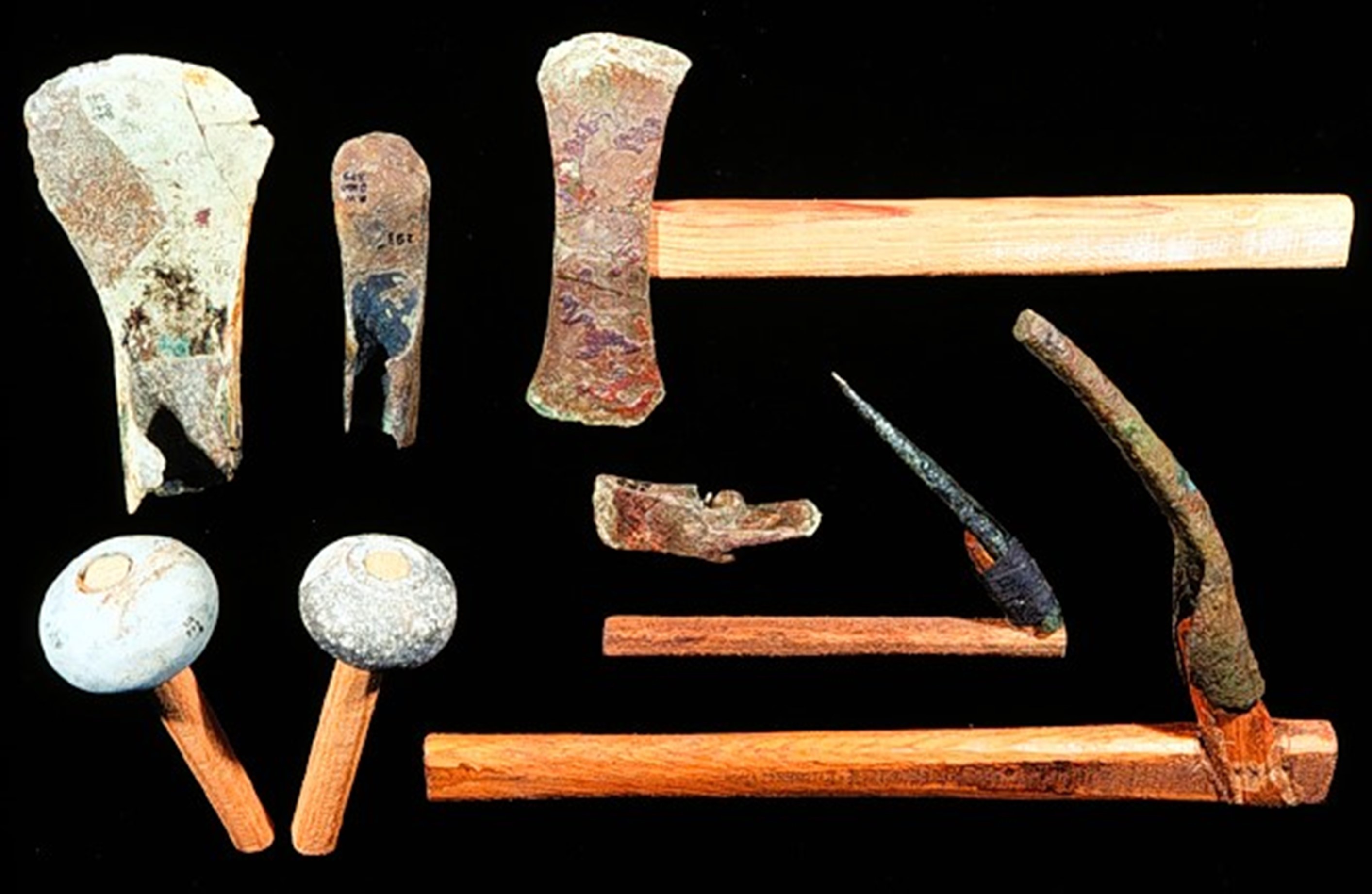
Stone was used in infrastructure (structures) and ornamentation as well. The Sumerians were particularly proud of their massive terraced ziggurats. This was a big deal for later Mesopotamian cultures too. Artists came across a period where they veered off to become specialized craftsmen. The craftsmen were potters, metalsmiths and jewelers; they also included stone-masons likely employed as builders for the palace of an Abhiyaan king. Most of these artisans or craftsmen survive until today. Tech they still owe to the Mesopotamians That just goes to show how lasting their craftmanship influence was.
Decorative and Functional Uses
Over time, dog collars developed along with civilizations. Practical functions aside, collars were also way to… These were also used for a decorative and symbolic purpose. Nobility in mediaeval Europe wore costumes with elaborate collars. They were made of precious metals with jewels set into them. The collars were opulent.
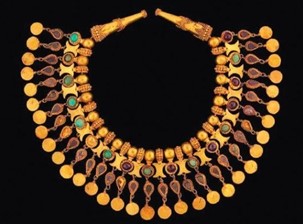
They demonstrated the wealth of the owner and status of his dogs. These collars were then more personalized with engraved owners’ names or family crest. We also included functional elements like ID tags and bells. The laws suggested a rising concern for animals’ welfare and responsibility with ownership. Complete Collars for Dogs. They keep developing. They reveal our unending relationship to dogs and the lengths we will go to pay homage.
What was the Symbolic Role of Dogs in Mesopotamia
In ancient Mesopotamia, dogs were central to the gods. They were central to human existence, and therefore also in art & culture. We saw them in art and literature. And they were like virtues and had roles. Dogs signify the cold qualities of teaching leading protecting safeguarding faithfulness esteem attention and affection. Their lifestyle became less nomadic. Companion animals are often variable. This highlighted their strong attachment to humans. Dogs and deities Some myths linked dogs to gods or specifically, religion. They were viewed as guardians and menders.

They were found in myths and legends. These stories underscored their role as symbols of loyalty and fidelity. In addition, they thought of dogs as their protectors from the outside world. Some people believed that they were gifted. They would flourish with those qualities.
In ancient Mesopotamia, dogs were held in high regard Dogs are often pictured next to gods, reflecting the reverence in which they held their canine companions. Indicated as well in their roles of defenders and friends This is how dogs became so meaningful in Mesopotamian society. In ways both symbolic and substantive, they mattered.
Mesopotamian Myths and Legends
Many of the myths and legends from Mesopotamia heavily feature dogs. They are essential, at least to its goddess Gula (associated with healing and medicine). As well, it seems Gula is almost always depicted with a dog. The dog represents you as a person, your health and protection in the spiritual sense. This is in the belief that dogs will keep them safe from evil spirits and help them recover. How this makes the dogs significant members of Mesopotamian society.
Epic of Gilgamesh: likely one of the most famous texts from Mesopotamia. It is a tale of the ancient Sumerian king Gilgamesh and his side-kick Enkidu. The two embark on various heroic adventures, which culminate in the slaying of a monster known as Humbaba. The two friends also consider friendship itself, the meaning of death and immortality. It provides us with information about the way humans understood human life and godliness.
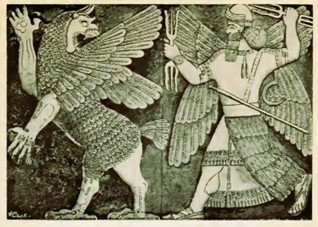
A further essential myth is that of the “Enuma Elish. This is becoming the Babylonian generation myth. It recounts the triumph of the god Marduk over an elder goddess, Tiamat. That earns the forces of good a victory and then there is order in the world – The success of Marduk, whose name means “bull calf of the sun,” encapsulates a focus on power and divine authority. The ideas we come up with involve Mesopotamian myths
The myths able to illustrate the connection between divine and mortal. This is common Mesopotamian culture. They focus on the religious reverence of dogs, and in mythology as with Greek god Hades that this hero-like honor to gods and kings.
Dogs in Art and Literature
Dogs have long been featured in Mesopotamian art and literature. It sends the message of authority and power that these dogmen hold. Dogs are frequently depicted in artwork They work with the gods, humans, and as guardians. These representations can be carvings, statues, or seals. These illustrate the tight bond between humans and dogs.
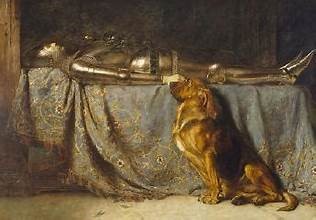
They depict dogs as faithful homies, but also guardian angels. It is many places where dogs are mentioned in Mesopotamian literary works. Stories come in all flavors, from the heroic to home and hearth. The dogs are also a symbol of the importance within Mesopotamian society. See how tales and art reflect the symbolic value of dogs. They divulge their function in shelter, companionship, and ceremony. Art and literature show dogs. Thus, they seem to emphasize the sanctified position of dogs. Dogs were embedded in Mesopotamian culture.
The Significance of Dog Collars and Amulets in Ancient Mesopotamia
Furthermore, dogs in Ancient Mesopotamia wore collars. “Their mastiff dogs were almost as heavy as the collars” noted scholar Paul Krawczyk. The collars came with heavy handles and leather straps. “Dogs were essential in Ancient Mesopotamia,” continues the author, Paul Krawczyk. People used to decor their dogs with collars. The scholar says that in his time, mastiffs were enormous. “They weighed nearly as much as their collars”. On of the famous depictions of dogs is the gold dog pendant. The pendant is from around 3300 BCE. Archaeologists discovered the pendant inv Uruk. It is currently exhibited at the Museum of Fine Arts, Boston. It depicts a Saluki dog with a collar.
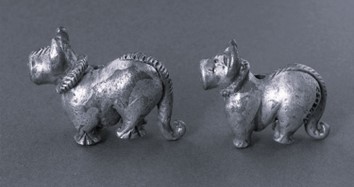
The Saluki was a popular breed, and it was important in Mesopotamia. “They weighed nearly as their collars”. The amulets were made out of gold, and they were small. The amulets with dogs inferred dogs that belonged to some wealthy people. Furthermore, the amulets were not only a symbol of prestige but, more importantly, a protective talisman. Gula, the goddess of healing tied it to the dogs. People adored the dogs, and they often tied amulets and made statues to protect against danger. Hence it was a huge aspect and the vital role dogs played. Dogs were crucial in the lives of Ancient Mesopotamia.
Nimrud Dogs in Mesopotamia History
Magical protection that may have been represented by dog figurines in ancient Mesopotamia. Nimrud Dogs are the best example. They were retrieved in the city of Kalu, nowadays called Nimrud by archaeologist Max Mallowan during his 1951-52 CE excavations. These dog statuettes illustrate this Mesopotamian belief. These people employed magic to maintain stability as the chaotic side. To the Mesopotamians, they were partners with the gods. They worked to fulfill the higher order of existence. The gods, in turn, supplied them nothing but suffice.
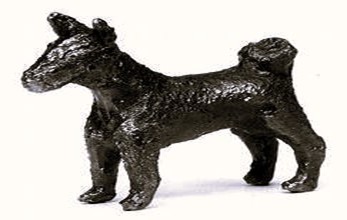
The Nimrud Dogs were also often painted on as apotropaic devices by artists. The plaques were typically buried on one each either side of the doorways in palaces or homes. They were there to protect against evil spirits, demons and the like. The dogs were prized for their size, writes the historian Jeremy Black. Admired for their loyalty and courage, they were also regarded as stalwart defenders. But they weren’t attached to a deity.
It was a particular tradition within the broader Mesopotamian scientific and divinatory corpus. We spoke many spells in charms Amulets against dark rites They tell a story of how the peoples that populated ancient Mesopotamia would have employed such tools in their defense. They used them against all kind of threats they read really existed out there. From angry gods to demonic entities, these threats were often the work of disgruntled deities. Here is a rare glimpse into the magical and religious world of Nimrud Dogs. One of the earliest civilizations to have started it.
Conclusion:
Ancient Mesopotamian society had a wide variety of positions for dogs. Some supporting evidence for this is found in art, literature, and mythology. From simple cords to complex leather and metal, Dog collars have changed enormously. Thereby, it corresponds to the evolution of Mesopotamian civilization. The Dogs were held in esteem for their utilitarian value. They were both hunters and guardians. Their symbolism was an asset as well. They were confidants and protectors of souls. Dogs are frequently depicted in art alongside gods such as Gula and Inanna. Healing, love, and protection. Many ways to show dogs. Filling incense cauldrons inside the temples of Thebes showing their importance in everyday life and religion. Examples of ancient Mesopotamian legends are the “Epic of Gilgamesh” and the “Enuma Elish,” They emphasize the cultural and symbolic significance of dogs. This is where they depicted dogs as companions to gods and mythological figures. The artifacts & narratives offer evidence that these ancient Mesopotamians revered and honored the dog. Believing the dogs to be loyal protectors and of divine status. They perceived those qualities to be vital even after death.
FAQs
1. What Material Were the First Dog Collars Made of in Ancient Mesopotamia?
Ans: The oldest known dog collars are from ancient Mesopotamia. They were basically nooses to put around the neck of a dog.
2. Evolution of Dog Collars in Ancient Mesopotamia?
Ans: Originally, dog collars were simple cords that have since gained a reputation of being some type of stronger material. Those materials were woolen and leather. They’ve put in handles and straps for better handling.
3. How Important Were Dogs in Mesopotamian Society?
Ans: Dogs were respected as guides, healers, guardians and dozens of years earlier had been viewed either eaten or maybe sacrificed for religious reasons. They were associated with gods as well. Religion and myth shape our lives on a grand scale.
4. Mesopotamian art frequently shows which goddess with a dog?
Ans: Gula is a goddess. Medicine Skills (Linked-Healing, Medicine) She is frequently depicted with a dog
5. What spiritual importance did Barking dogs hold in Mesopotamian myths?
Ans: Dogs were considered as protectors for people. They were the subject of many myths and legends, such as “The Epic of Gilgamesh” In those stories they represent loyalty and bravery.
6. What did the Mesopotamians think of dogs as healers?
Ans: The Mesopotamians thought that dog saliva could heal wounds. They had linked dogs to their deity of healing known as Gula. It was a reconstitution of the animal’s innate ability for protection and helmet.



